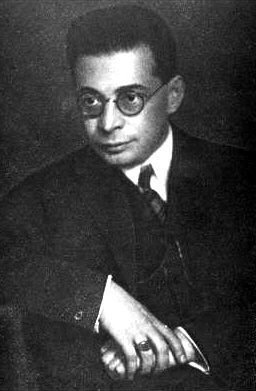Related Research Articles
Psychoanalysis is a set of theories and therapeutic techniques that deal in part with the unconscious mind, and which together form a method of treatment for mental disorders. The discipline was established in the early 1890s by Sigmund Freud, whose work stemmed partly from the clinical work of Josef Breuer and others. Freud developed and refined the theory and practice of psychoanalysis until his death in 1939. In an encyclopedia article, he identified the cornerstones of psychoanalysis as "the assumption that there are unconscious mental processes, the recognition of the theory of repression and resistance, the appreciation of the importance of sexuality and of the Oedipus complex." Freud's students Alfred Adler and Carl Gustav Jung developed offshoots of psychoanalysis which they called individual psychology (Adler) and Analytical Psychology (Jung), although Freud himself wrote a number of criticisms of them and emphatically denied that they were forms of psychoanalysis. Psychoanalysis was later developed in different directions by neo-Freudian thinkers, such as Erich Fromm, Karen Horney, and Harry Stack Sullivan.

Sándor Ferenczi was a Hungarian psychoanalyst, a key theorist of the psychoanalytic school and a close associate of Sigmund Freud.

Otto Rank was an Austrian psychoanalyst, writer, and philosopher. Born in Vienna, he was one of Sigmund Freud's closest colleagues for 20 years, a prolific writer on psychoanalytic themes, editor of the two leading analytic journals of the era, managing director of Freud's publishing house, and a creative theorist and therapist. In 1926, Rank left Vienna for Paris and, for the remainder of his life, led a successful career as a lecturer, writer, and therapist in France and the United States.
Prenatal psychology can be seen as a part of developmental psychology, although historically it was developed in the heterogenous field of psychoanalysis. Its scope is the description and explanation of experience and behaviour of the individual before birth and postnatal consequences as well. In so far as the actual birth process is involved one can consider this perinatal psychology. Pre- and perinatal aspects are often discussed together.
Dissociation is a concept that has been developed over time and which concerns a wide array of experiences, ranging from a mild emotional detachment from the immediate surroundings, to a more severe disconnection from physical and emotional experiences. The major characteristic of all dissociative phenomena involves a detachment from reality, rather than a loss of reality as in psychosis.
Psychological trauma is an emotional response caused by severe distressing events such as accidents, violence, sexual assault, terror, or sensory overload.
In psychology, introjection is the unconscious adoption of the thoughts or personality traits of others. It occurs as a normal part of development, such as a child taking on parental values and attitudes. It can also be a defense mechanism in situations that arouse anxiety.
Object relations theory is a school of thought in psychoanalytic theory and psychoanalysis centered around theories of stages of ego development. Its concerns include the relation of the psyche to others in childhood and the exploration of relationships between external people, as well as internal images and the relations found in them. Thinkers of the school maintain that the infant's relationship with the mother primarily determines the formation of its personality in adult life. Particularly, attachment is the bedrock of the development of the self or the psychic organization that creates the sense of identity.
Verbal abuse is a type of psychological/mental abuse that involves the use of oral, gestured, and written language directed to a victim. Verbal abuse can include the act of harassing, labeling, insulting, scolding, rebuking, or excessive yelling towards an individual. It can also include the use of derogatory terms, the delivery of statements intended to frighten, humiliate, denigrate, or belittle a person. These kinds of attacks may result in mental and/or emotional distress for the victim.
Recovered-memory therapy (RMT) is a catch-all term for a controversial and scientifically discredited form of psychotherapy that critics say utilizes one or more unproven therapeutic techniques to purportedly help patients recall previously forgotten memories. Proponents of recovered memory therapy claim, contrary to evidence that traumatic memories can be buried in the subconscious and thereby affect current behavior, and that these memories can be recovered through the use of RMT techniques. RMT is not recommended by mainstream ethical and professional mental health associations.

Franz Gabriel Alexander was a Hungarian-American psychoanalyst and physician, who is considered one of the founders of psychosomatic medicine and psychoanalytic criminology.

Self-destructive behavior is any behavior that is harmful or potentially harmful towards the person who engages in the behavior.
Richard B. Gartner is a clinical psychologist who was trained both as a family therapist and an interpersonal psychoanalyst. One of the founders of MaleSurvivor: the National Organization on Male Sexual Victimization [www.malesurvivor.org], he is a Past President of the organization and now chairs its advisory board. He is known for his research and clinical work in the area of child sexual abuse against boys and its aftermath for them as men.

The Oedipus complex is an idea in psychoanalytic theory. The complex is an ostensibly universal phase in the life of a young boy in which, to try to immediately satisfy basic desires, he unconsciously wishes to have sex with his mother and disdains his father for having sex and being satisfied before him. Sigmund Freud introduced the idea in The Interpretation of Dreams (1899), and coined the term in his paper A Special Type of Choice of Object made by Men (1910).
Martin Stanton is a British writer, teacher and psychoanalyst.
Sandor Rado was a Hungarian psychoanalyst of the second generation, who moved to the United States of America in the 1930s.

The Assault on Truth: Freud's Suppression of the Seduction Theory is a book by the former psychoanalyst Jeffrey Moussaieff Masson, in which the author argues that Sigmund Freud, the founder of psychoanalysis, deliberately suppressed his early hypothesis, known as the seduction theory, that hysteria is caused by sexual abuse during infancy, because he refused to believe that children are the victims of sexual violence and abuse within their own families. Masson reached this conclusion while he had access to several of Freud's unpublished letters as projects director of the Sigmund Freud Archives. The Assault on Truth was first published in 1984 by Farrar, Straus and Giroux; several revised editions have since been published.

Galit Atlas is an Israeli-American psychoanalyst best known for her rethinking of the place of sexuality and desire in contemporary theory and practice. Her new and innovative work on emotional inheritance explores the ways our ancestors' experiences shape our lives.
Little Arpad [Bandi, 'Rooster Man'] is the name given to a case history of a child with a rooster identification and fetish by the psychoanalyst Sandor Ferenczi.
Therese Benedek was a Hungarian-American psychoanalyst, researcher, and educator. Active in Germany and the United States between the years 1921 and 1977, she was regarded for her work on psychosomatic medicine, women's psychosexual development, sexual dysfunction, and family relationships. She was a faculty and staff member of the Chicago Institute for Psychoanalysis from 1936 to 1969.
References
- 1 2 Laplanche, Jean; Pontalis, Jean-Bertrand (2018) [1973]. "Identification with the Aggressor". The Language of Psychoanalysis. Abingdon-on-Thames: Routledge. ISBN 978-0-429-92124-7.
- ↑ Prior, Stephen (2004) [1996]. Object Relations in Severe Trauma. Psychotherapy of the Sexually Abused Child. Lanham, Maryland: Jason Aronson. p. 64. ISBN 978-0-765-70018-6. First edition.
- ↑ Figley, Charles R.; Kiser, Laurel J. (2013). Helping Traumatized Families. Abingdon-on-Thames: Routledge. p. 12. ISBN 978-1-136-70057-6.
- ↑ Mosher, Ralph (1992). Garrod, Andrew (ed.). Learning for Life. Moral Education Theory and Practice. Santa Barbara, California: Greenwood Publishing Group. p. 194. ISBN 978-0-275-94045-4.
- ↑ Ferenczi, Sándor (1995) [1988]. Dupont, Judith (ed.). The Clinical Diary of Sándor Ferenczi. Translated by Michael Balint, Nicola Zarday Jackson (illustrated, reprint, revised ed.). Cambridge, Massachusetts: Harvard University Press. p. 144. ISBN 978-0-674-13527-7. First edition.
- ↑ Massing, Almuth (2013) [1990]. Massing, Almuth (ed.). Psychoanalytische Wege der Familientherapie. System Familie, Supplement. Springer-Verlag. p. 48. ISBN 978-3-642-75598-9. First edition.
- ↑ Sabourin, Pierre (17 December 2019). "Confusion of Tongues between Adults and the Child". Encyclopedia.com . Farmington Hills, Michigan: Gale . Retrieved 3 January 2020.
- ↑ Rachman Wm., Arnold. "Ferenczi's "Confusion of Tongues" Paper: A Turning Point in the Understanding and Treatment of Trauma". Archived from the original on 20 November 2008. Retrieved 3 January 2020.
- ↑ Ferenczi, Sándor (1949) [1932]. "Confusion of the Tongues Between the Adults and the Child—(The Language of Tenderness and of Passion)". International Journal of Psycho-Analysis . 30 (4): 225–230. First edition.
- ↑ Freud, Anna (1994) [1936]. Das Ich und die Abwehrmechanismen (6th, reprint ed.). Frankfurt: Fischer Taschenbuch Verlag. ISBN 978-3-596-42001-8.
Die Identifizierung mit dem Angreifer.
{{cite book}}: External link in|quote= - ↑ Aronson, Elliot; Carlsmith, J. Merrill (1963). "Effect Of The Severity Of Threat On The Devaluation Of Forbidden Behavior" (PDF). Journal of Abnormal and Social Psychology . 66 (6): 584–588. doi:10.1037/h0039901. S2CID 2632863. Archived from the original (PDF) on 4 March 2019.